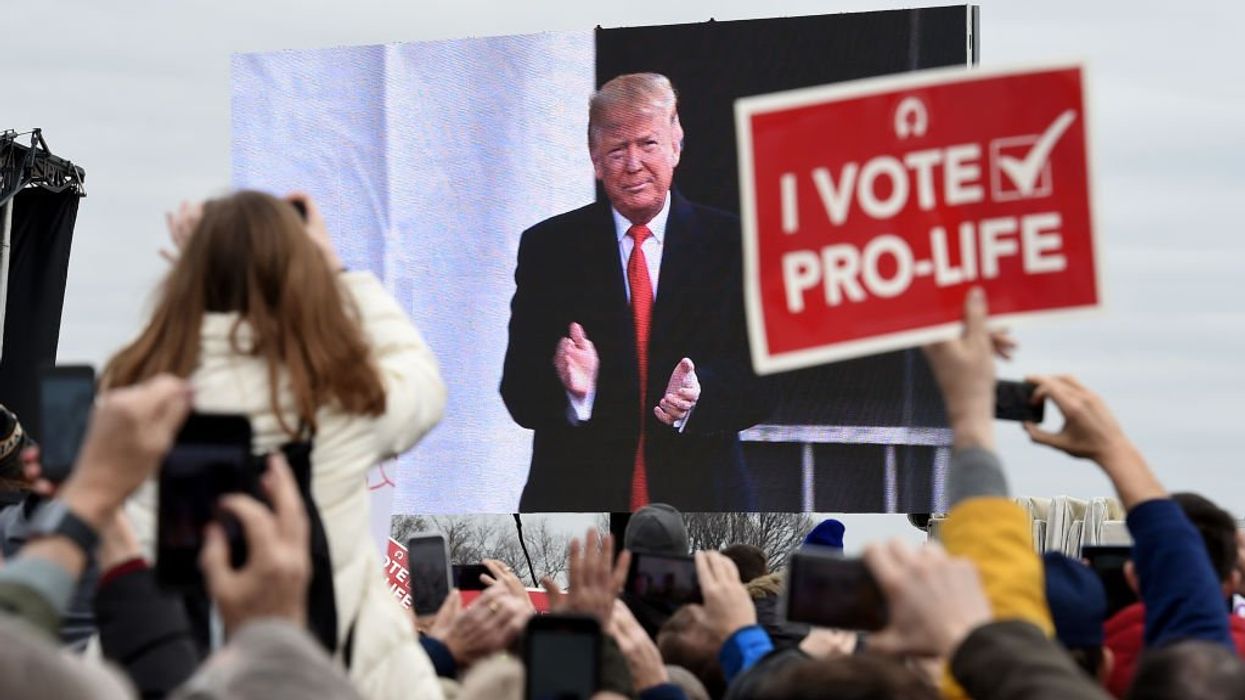
Olivier Douliery/AFP/Getty Images

By refusing to draw a gestational line, the GOP presidential candidate disrupts left-leaning campaign messaging, fostering a fresh debate over the future of pro-life legislation.
Donald Trump’s controversial statement on abortion this week made headlines for all sorts of reasons, including the fact that his position frustrated his opponent’s TV ad campaigns. That’s good. But the former president had plenty to say in his short video that deserves unpacking — and that still sets him apart from the most pro-abortion administration in U.S. history.
At issue is a 15-week national abortion law, which Republicans such as Senator Lindsey Graham (R-S.C.) support. Just last month, Trump hinted he might support such a law. The trouble is, the vast majority of abortions — more than nine in 10 — occur within 12 weeks of pregnancy.
While a four-month abortion limit in places like California, New York, or Maryland would be a win, at the federal level, it would conflict with better goals and call into question the courageous efforts of legislators across the country.
Worse, if a national 15-week ban ever went into effect, it could foster a European-style stalemate, where laws would be difficult if not impossible to change decades later.
Ruth Bader Ginsburg criticized Roe for short-circuiting legislative efforts. The late Supreme Court justice was a huge abortion supporter. But she argued that by removing the question from the democratic process, the court’s overreach undermined a political consensus. And the pro-life generation is not looking for consensus around allowing almost all abortions to continue.
Some pro-life proponents have argued for limiting abortions at four months as a consensus position. But if consensus is the goal, consider that the 15-week proposal polls as well as heartbeat laws, which begin around six weeks into gestation and would save significantly more lives. And yet, in refusing to articulate a gestational line at this time, Trump short-circuited the favored ad campaign narrative of the left — at least for now.
That’s good news. President Trump did not define the goals of the pro-life movement as a late-term limit. But there are complications. And as you read this, Students for Life Action is reaching out to the president for clarification.
By overturning Roe v. Wade, the Supreme Court opened the door to local, state, and federal authorities to engage in the human rights issue of our day.
If we’ve learned anything from the Biden administration, it’s that abortion very much remains a federal issue. We are paying for and propping up abortion vendors at home and abroad. To give just a few examples:
The Democrats’ signature health care law, the Women’s Health Protection Act, would allow abortions to be conducted up until birth — nationwide. States would be unable to push back or fight.
Those who say they don’t want federal engagement on abortion should at the very least advocate ending federal spending on abortion and abortion vendors in the United States and worldwide. And we should stop sneaking abortion funds into areas like our defense or military spending.
Should he be re-elected, Trump will have his hands full with a lifesaving agenda. That should include:
Life can and will win. It just requires imagination, determination, and perseverance, because this isn’t a battle that’s won overnight or by the mere stroke of a pen. When it comes to human rights, true, lasting victory requires perseverance amid hardship.
Kristan Hawkins